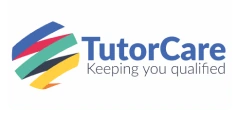Legionella risk assessment
What is Legionnaires’ disease?
When people think of Legionnaires’ disease they don’t automatically associate it as a risk in the workplace. However as Legionella is a common bacteria it is sensible to undertake a Legionella risk assessment in any environment where heated water is present.
Legionella bacteria are a type of bacteria that are naturally found in natural water systems, e.g. rivers, lakes and ponds. It can pose a danger to humans if this bacterium finds its way into artificial water systems where water is maintained at a temperature high enough to encourage growth. Domestic and work appliances such as showers, water tanks, hot and cold water systems and spa pools are all examples of breeding grounds for Legionella.
The most serious disease is known as Legionnaires’ disease, although less serious conditions such as Pontiac fever and Lochgoilhead fever also fall under the collective term of Legionellosis.
Who are at Risk?
Legionnaires’ disease is a form of pneumonia that can be fatal if left untreated. All ages are susceptible to infection however the risk increases with age. Other factors that increase the risk associated with Legionnaires’ include;
- people over the age of 45 years
- people suffering from kidney disease
- people suffering from chronic respiratory conditions
- people suffering from diabetes
- those with lung and/or heart disease
- anyone with an impaired immune system
Workplace Legionella related risks
Any water system with the right environmental conditions could be a source for legionella bacterial growth. Risks generally require the following factors;
- a temperature between 20-40 degrees centigrade
- systems that create or spread breathable droplets
- systems that re-circulate or store water (i.e. a spa)
- systems that contain a source of nutrients for the organism to grow, e.g. rust, scale, organic matter, biofilms and sludge
If you are an employer, or own premises (e.g. a landlord), you have a responsibility to understand and assess the risks associated with legionella as well as work to prevent or control such risks if they are found.
Legionella Risk Assessment
Any Legionella risk assessment should include;
- an up to date list of contact details of the “competent” person maintaining the system
- recording information specific to the system (i.e. how it works, what it does)
- identifying potential risk sources
- listing any preventative measures relating to the risk or any controls in place to counteract any potential risk
- details information on monitoring, inspection and maintenance procedures
- potential training of key personnel
- arrangements to review the risk assessment on a regular basis
As mentioned earlier, assigning the task of management of a potential “at-risk” system to a competent person is a necessity in the workplace. Likewise training of relevant personnel to a standard where they can identify potential risks is useful to ensure health and safety in the workplace. At TutorCare we offer a Legionella Awareness Training Course as part of our Health & Safety Essentials service range. Covering aspects ranging from legislation and legal requirements to the identification of at-risk hot and water systems, this course is available with a certificate upon completion and is valid for a period of 12 months thereafter.
References
https://www.nhs.uk/conditions/legionnaires-disease/
https://www.cdc.gov/legionella/about/causes-transmission.html
http://www.hygienecontracts.com/services/legionella-control/

One Reply to “Legionella risk assessment”
Comments are closed.